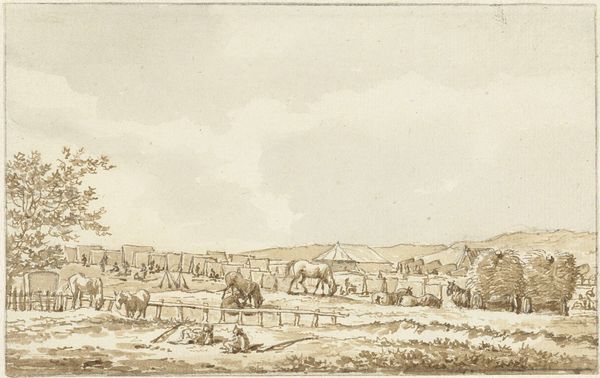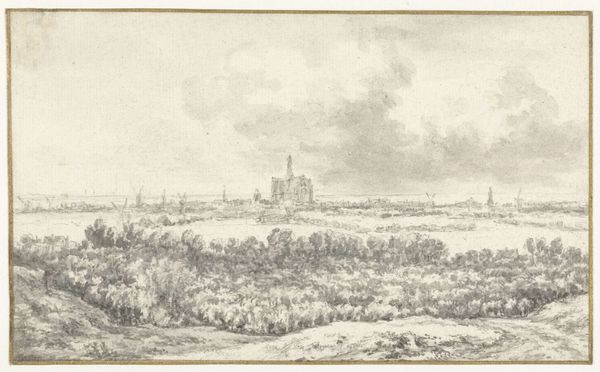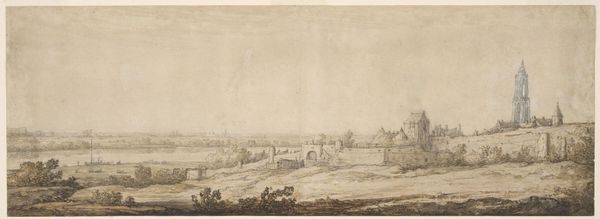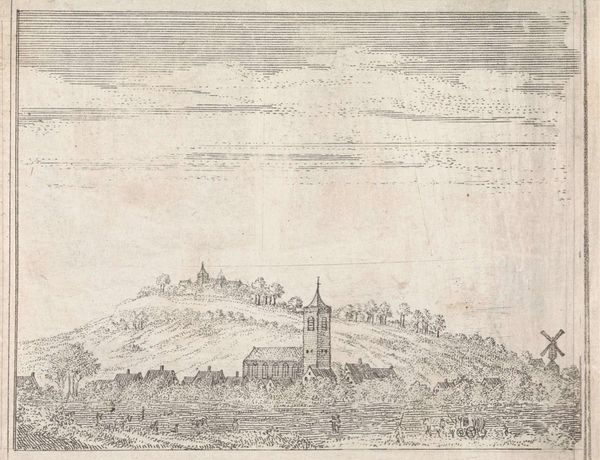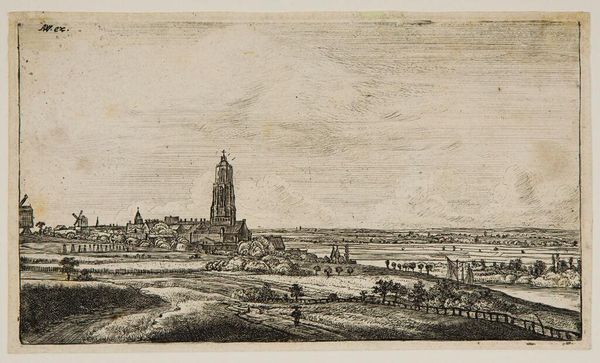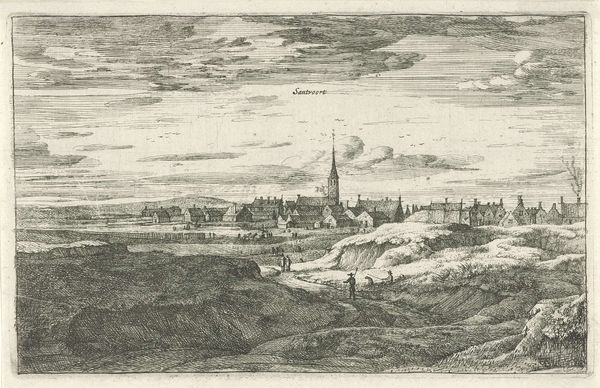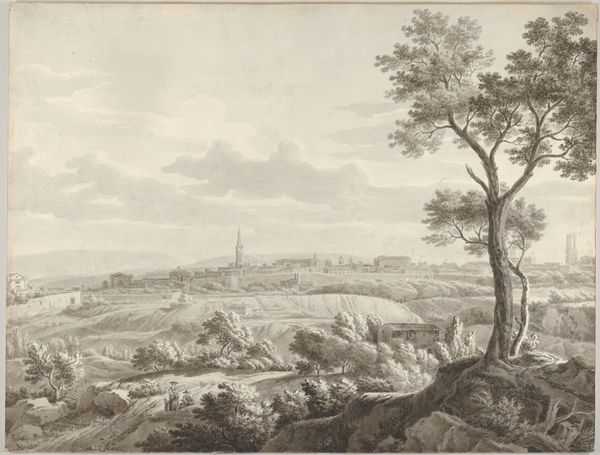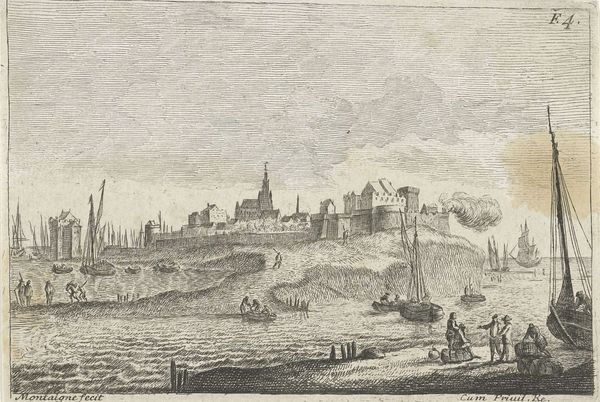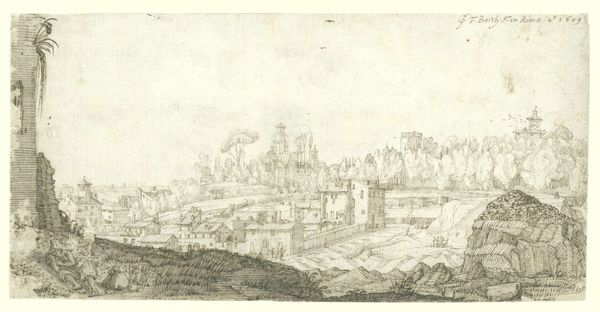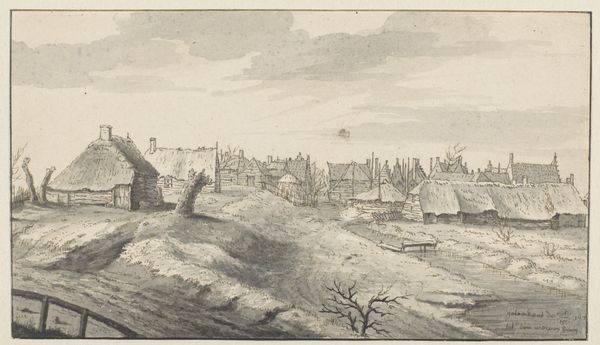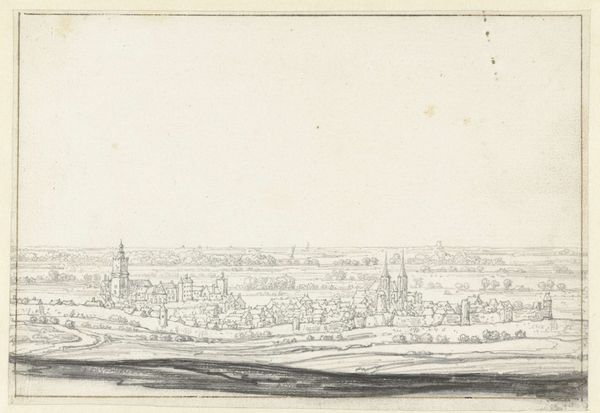
drawing, paper, watercolor, ink, pencil
#
drawing
#
dutch-golden-age
#
landscape
#
paper
#
watercolor
#
ink
#
pencil
#
cityscape
Dimensions: height 190 mm, width 486 mm
Copyright: Rijks Museum: Open Domain
Editor: This is "Gezicht op Arnhem," or "View of Arnhem," a landscape drawn by Aelbert Cuyp before 1651. It’s a subtle work using pencil, ink and watercolor on paper, currently held at the Rijksmuseum. It feels like a memory, faint and dreamlike. What visual echoes do you find in this piece? Curator: The wind-blown tree on the right, seemingly wrestling with an unseen force, certainly captures my attention. Notice how Cuyp places it in stark contrast to the distant, stoic skyline of Arnhem. It serves almost as an allegory, a representation of resilience perhaps, or even the struggle between nature's dynamism and civilization’s order. Does this resonate with you at all? Editor: Yes, I see what you mean. The tree is like a visual exclamation point! The rest feels muted and still. I hadn’t thought about that contrast in terms of resilience. Curator: Consider the prominent placement of that tree as well; it almost serves as a sentinel guarding the city. Given the period, with the Dutch Republic solidifying its identity, this image might signify the enduring strength of the Dutch spirit. Does this symbol influence your perception of the other features such as the architecture in the background? Editor: Definitely. Seeing it as a symbol makes the city in the background feel more permanent, like it's persevered despite the elements. I would probably have just seen the tree as an aesthetic choice otherwise. Curator: And there's also the fascinating duality present: a very local and grounded foreground, a wild and expressive tree; versus the distance and broader scope of a city, which leads into infinite possibilities of sky. So Cuyp is creating a kind of threshold. How does that understanding shape your appreciation of the work as a whole? Editor: That tension definitely enriches the whole composition, now that you’ve pointed it out. It’s more than just a pretty view. It feels symbolic on a deeper level, something lasting about the human struggle with the landscape. Curator: Precisely. Cuyp’s work functions beyond just representation, acting as a potent carrier of cultural memory and aspiration. I hope it resonates further as you reflect.
Comments
No comments
Be the first to comment and join the conversation on the ultimate creative platform.
